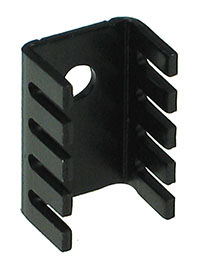I'm running a circuit where a microcontroller is used with a 22.1184Mhz crystal along with a radio module (HM-TRP) that continuously transmits data at 38.4kbps.
I hook it up to a wall wart as my power supply. Its specs are 6VDC/900mA.
When I run the circuit, the overall functionality is good, but after 10 mins of continuous power, when I put my finger on the part (identified as L7805CV), the part is warmer than the rest of the board, but not hot.
Some people say up the input voltage to the regulator (to 7+V instead of 6V) but I don't want to create more heat. So is this regulator going to last for a long time at warmer temperatures, or should I replace it with one that has a longer lifespan? I will consider a heat sink if t helps. In the future, I expect to have the circuit run for a minimum of 12 hours every day.
I hook it up to a wall wart as my power supply. Its specs are 6VDC/900mA.
When I run the circuit, the overall functionality is good, but after 10 mins of continuous power, when I put my finger on the part (identified as L7805CV), the part is warmer than the rest of the board, but not hot.
Some people say up the input voltage to the regulator (to 7+V instead of 6V) but I don't want to create more heat. So is this regulator going to last for a long time at warmer temperatures, or should I replace it with one that has a longer lifespan? I will consider a heat sink if t helps. In the future, I expect to have the circuit run for a minimum of 12 hours every day.


